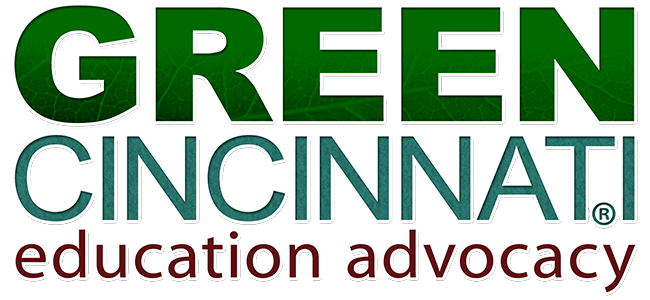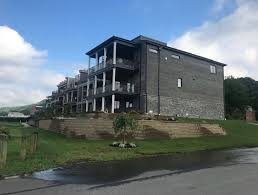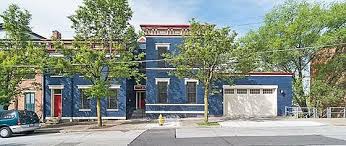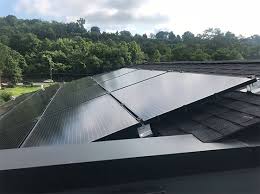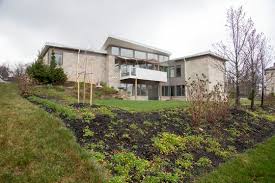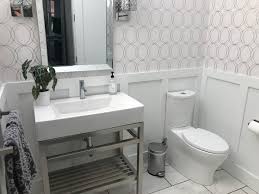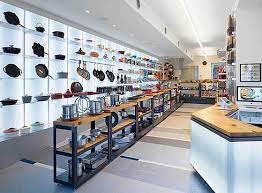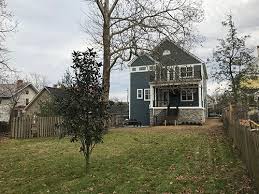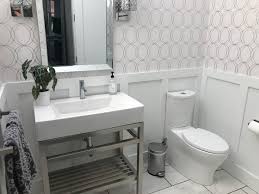The Cincinnati Green Building Tax Abatement has led a Community Renaissance in all 52 Neighborhoods
In 2022 the early adopters of the U.S. Green Building Council’s (USGBC) Leadership in Energy and Environmental Design (LEED) certification in 2007 will start to pay their full share of property taxes on their structure after the 15 years tax abatement allowed for building in the city. In 2002 the city started a 10-year tax abatement. In 2007 they added another five years if you met LEED Certification.
As part of the LEED certification owners can get a LEED point if they publish an article or have a tour for Public Awareness of the principals of energy and environmental design. I volunteer for the local chapter of the USGBC to produce tours of Green Homes. We’ve had 39 tours since 2014 and hundreds of people from all over the Greater Cincinnati area have learned what makes these homes energy and water efficient, provide excellent interior air quality and provide for regional jobs by encouraging regional building materials. My online publication Green Cincinnati® Education Advocacy gets paid to write and publish the articles as well as distribute them to other environmental education publications.
From writing the articles and giving the tours, I’ve learned a lot about the tremendous benefits Cincinnati gains from the tax abatements. Builders have told me that the additional five years added on to the original ten years was the tipping point for profitability in building in the city. It cost more to re-hab an OTR shell or even build in our dense neighborhoods, let alone negotiate the permits needed. Many empty nesters, who spent their careers downtown are transforming OTR shells into million-dollar residences. And they are doing it to the highest level of LEED, Platinum, which typically requires a rainwater cistern, solar panels and geothermal HVAC. All of the homeowners like living in a walkable neighborhood which supports local businesses and the employee taxes the city gets immediately.
If it wasn’t for the tax abatement, OTR wouldn’t get developed as it is now and like the street was paved in gold along the street car route. In 2010, when I moved my office to OTR, it was so depressed and blighted, it couldn’t even support a hardware store, ROHS closed. Now, every parcel of land within blocks of the route are under construction. And these are by individuals and families, which have completely changed the attitude of the community. Single family homeowners care about their neighborhood and their neighbors.
In two more years the floodgates of taxes will open up and the city will continue to gain tax revenue for decades to come. Not every neighborhood in Cincinnati needed the boost that the tax abatements have generated but the ones that did have experienced a complete transformation because of it. I’m not expert but since I moved to Cincinnati in 1977, I saw Walnut Hills slowly die along with Madisonville. It’s taken decades for them to get back on their feet. The Green Building tax abatements have been to final piece in their redevelopment.
And also, the tax abatement is getting harder and harder to achieve. LEED requirements get harder and harder to achieve with each new version. We’re on V4 now, which you would have to have achieved LEED Platinum in 2007 to get LEED Silver now.
If you would like to learn more about LEED homes, I encourage you to join the USGBC Ohio Chapter and attend a few of their tours. You’ll meet the folks that are part of the population growth in Cincinnati, and take away some ideas for your new home in the city or just improve the one you have. Cincinnati has always been an architectural wonder and now it can claim to be the national leader in LEED homes for our size population. Go to green-cincinnati.com to read the most recent article I’ve written for Martin Bruemmer and one of his homes on Golden Ave. in Columbia-Tusculum. His two homes as well and several others on Golden Ave. wouldn’t have been built if it wasn’t for the tax abatement.
Cincinnati history of tax abatements
Since 2002, the city of Cincinnati has granted 10-year tax abatement on structures. In 2007, the city added an additional five years to the tax abatement for those receiving LEED Certification. In 2011, the tax abatement for LEED became a bit more layered and difficult. Now, owners must achieve LEED Silver to receive a tax break on the first $285,000 of the structure’s value. LEED Gold has a limit of $565,000, and it’s unlimited if you achieve LEED Platinum. Because of the tax abatement, nearly every new home in Cincinnati is LEED Certified and builders have become quite familiar with how to do it cost-effectively.
Certification level decision story
LEED for Homes
The LEED for Homes Rating System provides a basis for quantifying the benefits of green homes, thereby facilitating the widespread construction of more sustainable homes. One of the first steps in planning a LEED home is to adjust the certification thresholds based on the material and energy impacts. All else being equal, a large home consumes more materials and energy than a small home over its lifecycle. LEED compensates for these impacts by adjusting the thresholds for each award level. Thresholds for smaller-than-average homes are lowered, and thresholds for larger-than-average homes are raised. A home’s threshold for LEED Gold maybe 72 points. A 4,500-sq.-ft. home with five bedrooms would be about 85 points.
In the end, the homeowner will have a well built and third-party certified home. Passing the blower door test alone is significant. Blower door tests are used to prove the air sealing quality of the construction. During the test the home is depressurized to -50 Pascal and measurements are recorded throughout the home to verify that outside air isn’t leaking into the home at a rate higher than required. It proves the home won’t be drafty and uncomfortable. Contrary to those builders who tell homeowners that homes need to breathe for fresh air, it is much better to control the ventilation rather than allowing shoddy construction and leaky vapor barriers to supply fresh air to the home.
The LEED Certification system is broadly categorized into five equally important parts that demonstrate measurable environmental benefits: Site, Water, Energy, Materials, and Indoor Environment Quality. The following is a review of the features of this home according to the LEED for Homes system.
Innovation and Design Process
The Innovation and Design Process section of LEED includes Integrated Project Planning, which maximizes opportunities for integrated, cost-effective adoption of green design and construction strategies.
A Preliminary Rating is arrived at as early a practical, they conducted a preliminary LEED for Homes meeting, with the participation of the key members of the project team and Green Building Consultants (the LEED for Homes Certification Provider) to target the level of LEED, select credits and assign the parties accountable.
A big help with this is that at least one principal member is a Professional Credentialed with respect to LEED for Homes.
Durability management process
The Innovation and Design Process section also includes the Durability Management Process, which promotes durability of the high-performance building enclosure, its components and systems through appropriate design, materials selection, and construction practices. Prior to construction, the project team will identify risks, responses regarding pests, storm damage and moisture control measures.
The home’s plans include the following features: No paper-backed backer board or carpet in tub, shower and spa areas, no carpet within kitchen or three feet of the entryway, drain and drain pans for tank water heaters and clothes washers in or over living areas, and exhausting conventional clothes dryers directly to outdoors.
Durability Management requires that the builder have a quality management process in place to ensure installation. A third-party verified these durability conditions.
Location and Linkages
Location and Linkages include site selection, which is a very important aspect of sustainable homes. This home isn’t in a floodplain or built within 100 feet of water or wetlands. The infill site with existing infrastructure didn’t replace prime farmland or parkland and build on habitat or threatened or endangered species. Runoff was controlled, so it didn’t contaminate stormwater sewers or erode hillsides.
Preferred location guidelines encourage the building of LEED homes near or within existing communities. This project was an infill site, which means at least 75 percent of the perimeter immediately borders previously developed land. It was built on a previously developed lot and uses Existing Infrastructure because it is within a half-mile of existing water and sewer lines.
Community Resources / Transit
Community Resources / Transit requires it to locate close to basic resources such as arts and entertainment center, bank, convenient store, daycare, fire station, cleaner, library, pharmacy, places of worship and schools. This home overachieved in the Outstanding community resources / transit category because it ranked higher than the benchmark of being sited within one-quarter mile of 11, one-half mile of 14 basic resources such as arts and entertainment center, bank, convenient store, daycare, fire station, cleaner, library, pharmacy, places of worship and schools. And it has at over the minimum of 60 transit rides available nearby per weekday.
Access to open space
The highly desired urban location encourages walking, physical activity, and time spent outdoors. Locate within ½ mile of a ¾ acre of public open space.
Sustainable Sites – Site Stewardship
Although the focus of green building is typically on the built structures located on a site, the design of the site and its natural elements can have a significant environmental impact.
Landscaping
The Sustainable Sites category of credits includes landscaping, non-conventional turf, and drought-tolerant plants. Since the provision and distribution of potable water is costly and energy-intensive, particularly during dry periods, a more sensible strategy is to design landscaping that requires less potable water.
Surface Water Management
The Sustainable Sites category of credits includes prerequisites to prevent construction runoff from damaging sewers and preserve topsoil. An infill site minimized disturbed area of the site.
Nontoxic Pest Control
The home integrated nontoxic pest control methods by sealing external cracks, joints, etc. with caulking and installed pest–proof screens.
Water Efficiency
Indoor water use
Very High-efficiency fixtures and fittings were specified for this home with an average flow rate is 1.5 gallons per minute, and 1.1 gallons per flush.
Energy & Atmosphere
Regarding Energy & Atmosphere, data from the homebuilding industry indicate that roughly 1.5 million new homes are built each year and that the average size of new homes has doubled in the past 50 years. As a result, total U.S. fossil fuel use in homes has been steadily increasing. The average American consumes five times more energy than the average global citizen, ten times more than the average Chinese person, and nearly 20 times more than the average Indian.
Exceptional energy performance measures improved the overall energy performance of the home by meeting or exceeding the performance of an Energy Star labeled home. A Home Energy Rating System (HERS) analysis verification of the energy efficiency of the home will be performed. They are required to exceed the Energy Star standard by reference to the Home Energy Rating System (HERS) analysis verification of the energy efficiency of the home. A home’s rating of 43 will mean that the home is 57% more efficient than a typical home in Cincinnati.
Residential refrigerant management
No ozone-damaging HCFC refrigerants are used in the air conditioning system.
Materials and Resources
The choice of building materials is important for sustainable homebuilding because of the extraction, processing, and transportation they require. Activities to produce building materials may pollute the air and water, destroy natural habitats and deplete natural resources. Construction and demolition wastes constitute about 40% of the total solid waste stream in the United States.
Environmentally preferable products
Environmentally preferable products increase demand for environmentally preferable products and products or building components that are extracted, processed, and manufactured within the region. Much of the exterior wall framing, aggregate, cement and driveway were existing. The flooring is regional hardwood.
If Forest Stewardship Certified tropical wood was used, the country of origin was requested for each wood product. A species is considered tropical if it is grown between the Tropics of Cancer and Capricorn.
Waste management
Waste management practices require projects to reduce waste generation to a level below the industry norm. Construction waste management planning investigated and documented local options for diversion and measured it, which resulted in diverting at least 25 percent or more from landfills.
Indoor Environmental Quality
Americans spend an average 90% of their time indoors, where levels of pollutants may run two to five times – and occasionally more than 100 times – higher than outdoors, according to the U.S. Environmental Protection Agency. Many of the pollutants found indoors can cause health reactions in the estimated 17 million Americans who suffer from asthma and 40 million who have allergies, contributing to millions of days absent from school and work.
Combustion venting
Indoor Environmental Quality requires combustion venting, which limits the leakage of combustion gases into the occupied space of the home. Indoor environmental quality included no unvented combustion appliances, carbon monoxide detectors in rooms that share a door with the garage; all fireplaces have doors, and space/water-heating equipment is designed with closed combustion or catalytic converters are specified.
Outdoor Air Ventilation
Outdoor Air Ventilation measures reduce occupant exposure to indoor pollutants by ventilating with outdoor air. Prerequisites included bathroom and kitchen exhausts meeting ASHRAE Standard 62.2 airflow requirements, air is exhausted to outdoors by an Energy Star labeled bathroom exhaust. Third-party performance testing was performed to verify proper installation.
Local exhaust
LEED Homes reduce moisture and exposure to indoor pollutants in kitchens and bathrooms by meeting ASHRAE Standards and only exhaust air to the outdoors, not the attic or interstitial spaces. Enhanced local exhaust uses occupancy sensors, automatic humidistat controller, and automatic timer or continuous fan.
Distribution of space heating and cooling
Distribution of space heating and cooling provided appropriate distribution of HVAC in the home to improve thermal comfort and energy performance. Room-by-room load calculations ensured ducts are designed accordingly. A typical home which has improved the distribution of space heating and cooling includes a return air opening of 1 square inch per cfm of supply and continuous supply airflow rates in each room tested and confirmed. This home has two HVAC systems that allow the systems to perform at their highest efficiency versus two systems being used at a lower efficiency.
Air filtering
Better filters, MERV 11, filters were installed.
Contaminant control
Indoor contaminants were controlled during construction, and the design allows for contaminant control, which includes space for shoe removal and storage near the primary garage entryway. A preoccupancy flush was performed to rid the home of contaminants that built up during the construction process.
Radon protection
Radon testing was done, and controls put into place if needed.
Garage pollutant protection
The home has no HVAC in the garage to minimize pollutants from the garage. The attached garage penetrations and floor and ceiling joists connections are sealed to prevent pollutants from getting into the home.
Awareness and Education
Some homebuyers may know very little about green home construction. They may be unaware of the green features in the home, or they may be unfamiliar with how to use and maintain them. Without adequate training, the full benefits of the LEED measures likely will not be achieved.
Education of the homeowner or tenant
These homeowners will receive an operator and training manual as well as a one-hour walkthrough. They’ll also receive the LEED checklists and forms, manufacturer’s manuals and cleaning and maintenance guidance. Finally, they will receive two hours of enhanced training.
Awareness and education requirements include this article as part of the LEED Certification. It will be published online at Green Cincinnati Education Advocacy and the local USGBC’s Chapter site once certified. LEED signage was posted on the site.
If you are interested in more information about the builder of the LEED home shown at the top of the page, contact:
Wakefield Development
Martin Bruemmer
[email protected]
513-227-6553
If you would like to learn more about LEED homes in Cincinnati, we suggest you join the local USGBC Chapter and attend their home tours and meetings.
